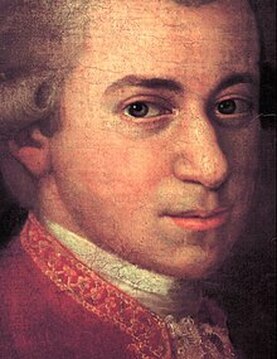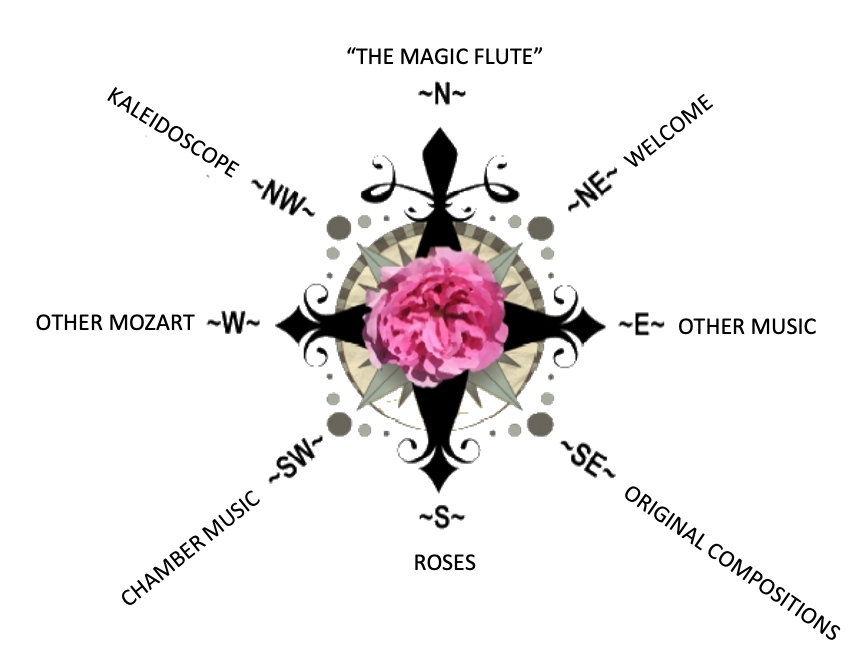- Home
- N - The Magic Flute
- NE - Welcome!
-
E - Other Music
- E - Music Genres >
- E - Composers >
-
E - Extended Discussions
>
- Allegri: Miserere
- Bach: Cantata 4
- Bach: Cantata 8
- Bach: Chaconne in D minor
- Bach: Concerto for Violin and Oboe
- Bach: Motet 6
- Bach: Passion According to St. John
- Bach: Prelude and Fugue in B-minor
- Bartok: String Quartets
- Brahms: A German Requiem
- David: The Desert
- Durufle: Requiem
- Faure: Cantique de Jean Racine
- Faure: Requiem
- Handel: Christmas Portion of Messiah
- Haydn: Farewell Symphony
- Liszt: Évocation à la Chapelle Sistine"
- Poulenc: Gloria
- Poulenc: Quatre Motets
- Villa-Lobos: Bachianas Brazilieras
- Weill
-
E - Grace Woods
>
- Grace Woods: 4-29-24
- Grace Woods: 2-19-24
- Grace Woods: 1-29-24
- Grace Woods: 1-8-24
- Grace Woods: 12-3-23
- Grace Woods: 11-20-23
- Grace Woods: 10-30-23
- Grace Woods: 10-9-23
- Grace Woods: 9-11-23
- Grace Woods: 8-28-23
- Grace Woods: 7-31-23
- Grace Woods: 6-5-23
- Grace Woods: 5-8-23
- Grace Woods: 4-17-23
- Grace Woods: 3-27-23
- Grace Woods: 1-16-23
- Grace Woods: 12-12-22
- Grace Woods: 11-21-2022
- Grace Woods: 10-31-2022
- Grace Woods: 10-2022
- Grace Woods: 8-29-22
- Grace Woods: 8-8-22
- Grace Woods: 9-6 & 9-9-21
- Grace Woods: 5-2022
- Grace Woods: 12-21
- Grace Woods: 6-2021
- Grace Woods: 5-2021
- E - Trinity Cathedral >
- SE - Original Compositions
- S - Roses
-
SW - Chamber Music
- 12/93 The Shostakovich Trio
- 10/93 London Baroque
- 3/93 Australian Chamber Orchestra
- 2/93 Arcadian Academy
- 1/93 Ilya Itin
- 10/92 The Cleveland Octet
- 4/92 Shura Cherkassky
- 3/92 The Castle Trio
- 2/92 Paris Winds
- 11/91 Trio Fontenay
- 2/91 Baird & DeSilva
- 4/90 The American Chamber Players
- 2/90 I Solisti Italiana
- 1/90 The Berlin Octet
- 3/89 Schotten-Collier Duo
- 1/89 The Colorado Quartet
- 10/88 Talich String Quartet
- 9/88 Oberlin Baroque Ensemble
- 5/88 The Images Trio
- 4/88 Gustav Leonhardt
- 2/88 Benedetto Lupo
- 9/87 The Mozartean Players
- 11/86 Philomel
- 4/86 The Berlin Piano Trio
- 2/86 Ivan Moravec
- 4/85 Zuzana Ruzickova
-
W - Other Mozart
- Mozart: 1777-1785
- Mozart: 235th Commemoration
- Mozart: Ave Verum Corpus
- Mozart: Church Sonatas
- Mozart: Clarinet Concerto
- Mozart: Don Giovanni
- Mozart: Exsultate, jubilate
- Mozart: Magnificat from Vesperae de Dominica
- Mozart: Mass in C, K.317 "Coronation"
- Mozart: Masonic Funeral Music,
- Mozart: Requiem
- Mozart: Requiem and Freemasonry
- Mozart: Sampling of Solo and Chamber Works from Youth to Full Maturity
- Mozart: Sinfonia Concertante in E-flat
- Mozart: String Quartet No. 19 in C major
- Mozart: Two Works of Mozart: Mass in C and Sinfonia Concertante
- NW - Kaleidoscope
- Contact
MOZART: "DISSONANT" STRING QUARTET NO. 19 IN C MAJOR, K. 465
(Excerpted from program notes for Grace Woods listening salon September 6 & 8, 2021)
Between 1777 and 1785 several major events impacted the life and compositional style of Wolfgang Amadeus Mozart (1756-1791).
(See: First Influence- Sinfonia Concertante in E-flat and Second Influence- Masonic Funeral Music)
And third, about the time Mozart moved in 1781 from Salzburg to a more hopeful situation in Vienna, he was introduced in 1782-3 to the music of J. S. Bach, whose work had largely been forgotten as music taste changed radically from Baroque counterpoint to the lighter style of the emerging classical style. Mozart’s compositions from that time onward began to include elements and procedures he was so attracted to in Bach’s music, in particular the fugue and imitative techniques. This addition to the elements that he had garnered from his visit to Mannheim only a few years earlier formed the ground of his fully mature compositions. He had already written a number of string quartets (2 violins, viola and cello), but with his new-found musical language the quartets from 1782 onward achieved a depth of expression and richness of technique. Mozart dedicated six of his quartets of that period (G, D minor, E-flat, B-flat, A, and C) to his friend and mentor, the eminent Franz Joseph Haydn (1832-1909), whose prodigious quartet output of more than 66 such works were an early influence of Mozart. In February of 1785 Haydn was visiting Wolfgang and his father Leopold one evening in Vienna and heard three of these “new quartets”. In response, he declared to Leopold, “Before God and as an honest man I tell you that your son is the greatest composer known to me either in person or by name. He has taste and, what is more, the most profound knowledge of composition.” High praise from the most famous composer of the time!
The beginning of the last of these works, the “Dissonant” in C, K. 465, is the source of its nickname: the slow introduction of the first movement piles note upon note in astonishingly intense relationships that gradually unfold to the sunny Allegro in C. The confusion and darkness of the introduction and its devolvement to “light” have singularly clear Masonic implications, which both Mozarts and Haydn would recognize. The final movement has many Haydn-like features: pauses, unexpected key changes, and a generally playful character.
Mozart's String Quartet No. 19 in C major, K. 465 "Dissonance)
Israel Philharmonic
David Radzynski, violin | Dumitru Pocitari, violin | Miriam Hartman, viola | Emanuele Silvestri, cello
Israel Philharmonic
David Radzynski, violin | Dumitru Pocitari, violin | Miriam Hartman, viola | Emanuele Silvestri, cello
Choose Your Direction
The Magic Flute, II,28.




